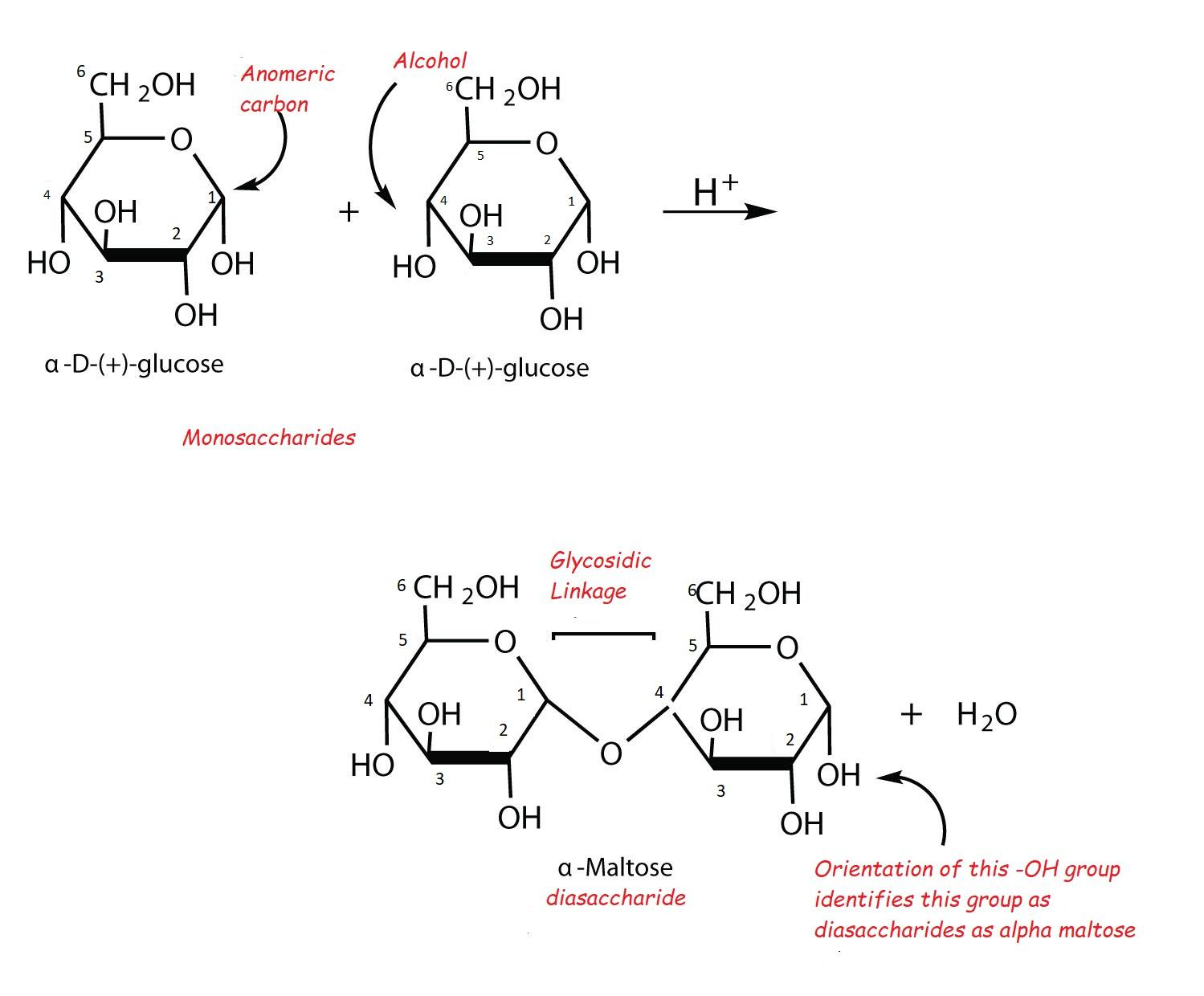
Lactose is made up of:
A. Galactose and glucose unit
B. Glucose unit and fructose
C. Both glucose units
D. Glucose and arabinose unit
Answer
216.3k+ views
Hint: Lactose is basically a reducing sugar, it is known as milk sugar, because it is found to occur in the milk of cows and also in other mammals. Lactose is found to be lowest in sweetness among all others found in nature.
Step by step solution:
-Structure of lactose is found as:

-When lactose undergoes acid hydrolysis then two monosaccharides are formed, one molecule of D-glucose and one molecule of D-galactose.
- They are found to be joined by a $\beta -1,4-\text{ }gly\cos idic$ bond , the bond from the anomeric carbon of the first monosaccharide unit is in upward direction.
- This process also involves the catalytic action of enzyme lactase.
- Hence, we can conclude that the option (a)is correct that lactose is made up of galactose and glucose units.
Additional information:
- We can see that there is lactose intolerance found in most adults. Lactose intolerance means when a body is not able to digest the lactose which is found in milk and various dairy products.
- There are various symptoms of lactose intolerance depending on the amount of lactose that our body can make. Some of them are like: gas, pain or cramps and mostly diarrhoea.
- It is found that the reason for lactose intolerance is when the small intestine can’t produce sufficient enzymes that are called lactose. Our body basically needs lactose to digest lactose.
- Those people who are lactose intolerant should eat calcium rich food that can make their bones healthy.
Note:
- Galactose and glucose both have the same chemical formula that is ${{C}_{6}}{{H}_{12}}{{O}_{6}}$. Also, both of them have the same structure but the difference is only in the position of one hydroxyl group.
Step by step solution:
-Structure of lactose is found as:

-When lactose undergoes acid hydrolysis then two monosaccharides are formed, one molecule of D-glucose and one molecule of D-galactose.
- They are found to be joined by a $\beta -1,4-\text{ }gly\cos idic$ bond , the bond from the anomeric carbon of the first monosaccharide unit is in upward direction.
- This process also involves the catalytic action of enzyme lactase.
- Hence, we can conclude that the option (a)is correct that lactose is made up of galactose and glucose units.
Additional information:
- We can see that there is lactose intolerance found in most adults. Lactose intolerance means when a body is not able to digest the lactose which is found in milk and various dairy products.
- There are various symptoms of lactose intolerance depending on the amount of lactose that our body can make. Some of them are like: gas, pain or cramps and mostly diarrhoea.
- It is found that the reason for lactose intolerance is when the small intestine can’t produce sufficient enzymes that are called lactose. Our body basically needs lactose to digest lactose.
- Those people who are lactose intolerant should eat calcium rich food that can make their bones healthy.
Note:
- Galactose and glucose both have the same chemical formula that is ${{C}_{6}}{{H}_{12}}{{O}_{6}}$. Also, both of them have the same structure but the difference is only in the position of one hydroxyl group.
Recently Updated Pages
JEE Atomic Structure and Chemical Bonding important Concepts and Tips

JEE Amino Acids and Peptides Important Concepts and Tips for Exam Preparation

Electricity and Magnetism Explained: Key Concepts & Applications

Chemical Properties of Hydrogen - Important Concepts for JEE Exam Preparation

JEE Energetics Important Concepts and Tips for Exam Preparation

JEE Isolation, Preparation and Properties of Non-metals Important Concepts and Tips for Exam Preparation

Trending doubts
JEE Main 2026: Application Form Open, Exam Dates, Syllabus, Eligibility & Question Papers

JEE Main Correction Window 2026 Session 1 Dates Announced - Edit Form Details, Dates and Link

Derivation of Equation of Trajectory Explained for Students

Hybridisation in Chemistry – Concept, Types & Applications

Understanding the Angle of Deviation in a Prism

Understanding Collisions: Types and Examples for Students

Other Pages
NCERT Solutions For Class 12 Chemistry Chapter 1 Solutions - 2025-26

NCERT Solutions for Class 12 Chemistry Chapter Chapter 7 Alcohol Phenol and Ether

NCERT Solutions ForClass 12 Chemistry Chapter Chapter 8 Aldehydes Ketones And Carboxylic Acids

JEE Advanced Marks vs Ranks 2025: Understanding Category-wise Qualifying Marks and Previous Year Cut-offs

Haloalkanes and Haloarenes Class 12 Chemistry Chapter 6 CBSE Notes - 2025-26

Solutions Class 12 Chemistry Chapter 1 CBSE Notes - 2025-26




